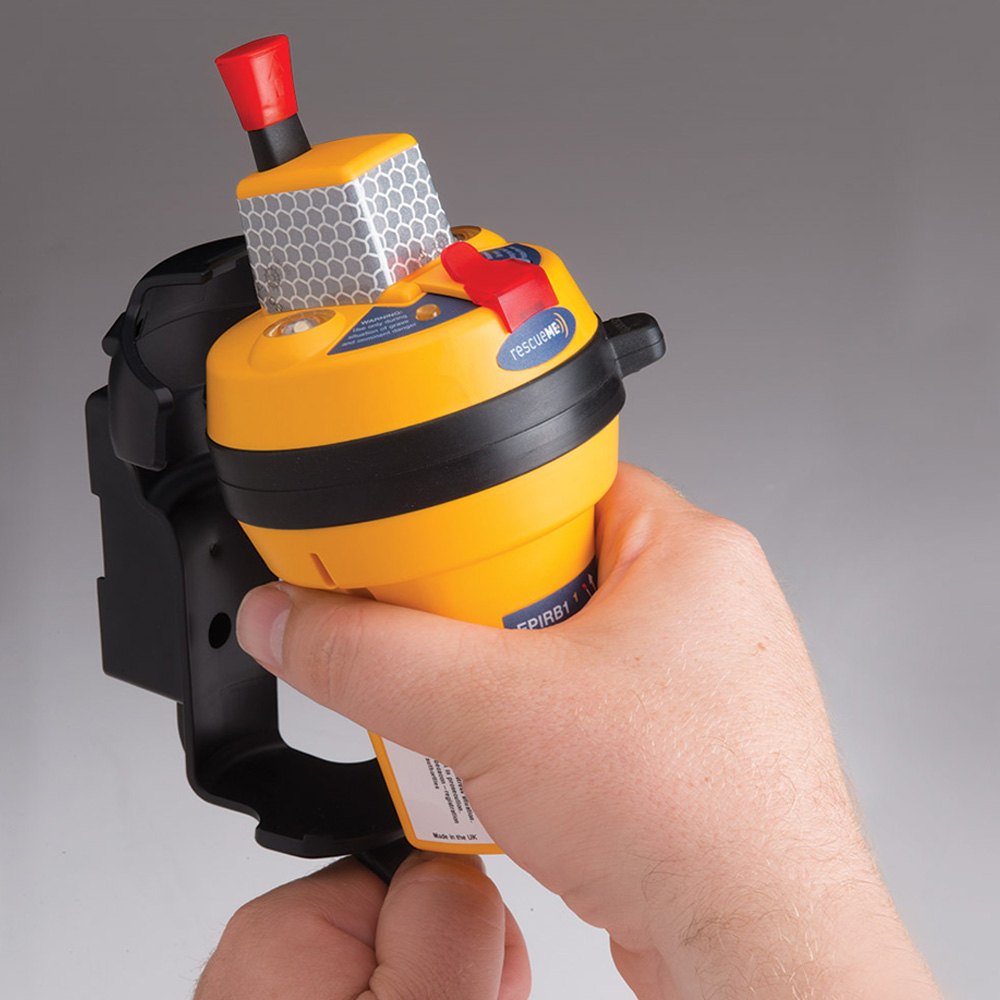$705.
 95
the rescueme epirb1 pro operates in the 406mhz satellite band. This band comprises the international distress frequencies that are constantly monitored by cospas-sarsat, the international
search
, and rescue satellite operators, ensuring a rapid response when a signal is received, no matter where it is in the world. Warning: prop 65.
95
the rescueme epirb1 pro operates in the 406mhz satellite band. This band comprises the international distress frequencies that are constantly monitored by cospas-sarsat, the international
search
, and rescue satellite operators, ensuring a rapid response when a signal is received, no matter where it is in the world. Warning: prop 65.
Once switched on (activated), an epirb transmits a signal which will be picked up by satellites within the international cospas-sarsat search and rescue satellite system. Satellites receive signals sent on the 406 mhz frequency, the standard international frequency for distress beacons. The satellite retransmits the signal to the nearest ground receiving station (local user terminal) which then sends the signal to the closest mcc (mission control centre). The mcc analyses the signal and sends it to the responsible rcc. In new zealand’s search and rescue region, this is the rccnz based in lower hutt. When they receive a signal, the rccnz begins a search and rescue response.
The safesea epirb1 pro operates in the 406mhz satellite band. This band comprises the international distress frequencies that are constantly monitored by cospas-sarsat, the international search and rescue satellite operator, ensuring a rapid response when a signal is received, no matter where it is in the world. As the world’s most compact emergency position indicating radio beacon or epirb, the epirb1 pro pairs its compact stature with a durable design, making it a practical option to meet the needs of all commercial, fishing, and leisure vessels. The product has been designed for maximum efficiency and boasts a 10 year battery life in addition to superb operating life when activated, keeping rescue services updated with your location for longer.
Emergency Position-Indicating Radio Beacon [ edit ]
From wikidata
epirs
emergency position-indicating radiobeacon
distress radiobeacon, a tracking transmitter that is triggered during an accident
epirs
this page was last edited on 21 october 2023, at 01:07.
All structured data from the main, property, lexeme, and entityschema namespaces is available under the creative commons cc0 license ; text in the other namespaces is available under the creative commons attribution-sharealike license ; additional terms may apply. By using this site, you agree to the terms of use and privacy policy. Privacy policy.
Credits : source - google / image by wikimedia commons emergency position indicating radio beacon also known as epirb is a waterproof, buoyant and a portable battery powered radio transmitter used to locate a ship or survival craft which is in distress. The epirb works on a standard frequency of 406 mhz. As per solas , every vessel must carry a category 1 406 mhz satellite epirb. When the vessel is underway, the epirb must be stowed in its float-free bracket with the controls set for automatic activation and should be mounted in a manner so that it will float free if the vessel sinks.
Personal Locator Beacon [ edit ]
From wiktionary, the free dictionary 1. 1. 1 alternative forms 1. 1. 2 synonyms personal locator beacon e911 this page was last edited on 26 april 2021, at 16:05. Definitions and other text are available under the creative commons attribution-sharealike license ; additional terms may apply. By using this site, you agree to the terms of use and privacy policy.
There are three types: personal locator beacon (plb), a hand-held device used when an individual is in distress and unable to access normal emergency services (such as police) emergency locator transmitter (elt), used to broadcast aircraft distress emergency position-indicating radio beacon (epirb), typically used to broadcast maritime distress.
See also [ edit ]
Visit marine epirbs for your choice of safe boating visit marine epirbs for your choice of safe boating http://www. Marine-epirbs. Com sixth edition, c. G. (2008). Sailing skills and seamanship. Camden: mcgraw-hill. Reference sixth edition, c. G. (2008). Sailing skills and seamanship. Camden: mcgraw-hill.
Automatic hydrostatic release unit [ edit ]
Product features: automatic and manual start; contain the 121. 5mhz auxiliary locator transmitter to facilitate wireless relocation; automatically release the device with a hydrostatic release unit; automatically turn on at night, high-brightness flash; gps global positioning system. The vep8 is available as float-free deckmounted device using hydrostaticrelease mechanism to be activated automatically on 4m depth. Three leds provide indication of 406 ( cospas-sarsat) and 121. 5mhz ( sarhoming frequency ) transmitters and battery status. Easy changeable 2-cell lithium battery with 5 years life. Small size and weight make pro-5 anideal solution for pleasure boats and yachts. High stability in upright position on wavy surface.
No comments:
Post a Comment